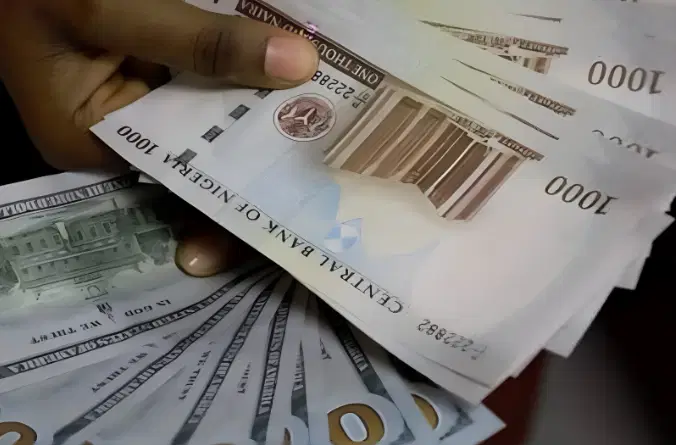The naira gained ground against the dollar on Friday across multiple foreign exchange markets, reflecting improved liquidity and bolstering the World Bank’s recent acknowledgment of growing stability in Nigeria’s currency.
At the Nigerian Foreign Exchange Market (NFEM), the naira closed at ₦1,599.54/$, slightly firmer than the previous week’s closing rate of ₦1,599.79/$, according to Central Bank of Nigeria (CBN) data. In the parallel (black) market, the naira remained stable at ₦1,605/$, a rate it has consistently held since Wednesday.
The World Bank, in its latest economic review, credited this relative stability to government reforms, better FX liquidity, and reduced market volatility. The Bank noted that ongoing efforts to unify Nigeria’s exchange rate and allow market forces to guide its value have made the naira more competitive.


“Improved foreign exchange liquidity and reduced volatility have led to a more stable naira so far this year,” the World Bank stated.
The report also highlighted similar trends across Africa, pointing out that currencies like the Kenyan shilling gained 20% in 2024 and have remained stable into 2025. However, currencies in debt-laden nations with weak export earnings, such as South Sudan, Ethiopia, and Nigeria, saw steep devaluations in 2024—over 40% in the naira’s case. Yet, in 2025, the naira has shown signs of stabilizing.
Research from Afrinvest Securities Limited supports this view. Their data showed the naira had depreciated by just 4.0% year-to-date, trading at ₦1,602.30/$ as of April 23, 2025. They attributed this to the CBN’s active interventions in the FX market to address dollar shortages.


However, analysts caution that sustaining this progress may prove difficult due to resource constraints. Afrinvest flagged weak FX inflows from crude oil sales and a 51.9% quarter-on-quarter drop in portfolio investment in Q3 2024, which shrank to $1.3 billion.
The strain has also eroded Nigeria’s foreign reserves, which fell from $40.9 billion at the start of the year to $37.2 billion, driven by a mismatch between inflows and FX outflows. Analysts warn this decline could discourage foreign investors and weigh on overall economic growth, likely influencing the International Monetary Fund’s (IMF) recent downgrade of Nigeria’s growth outlook.

Still, despite these headwinds, the naira’s performance in 2025 has so far offered a relatively calm and more predictable FX landscape compared to the turbulence of previous years.




